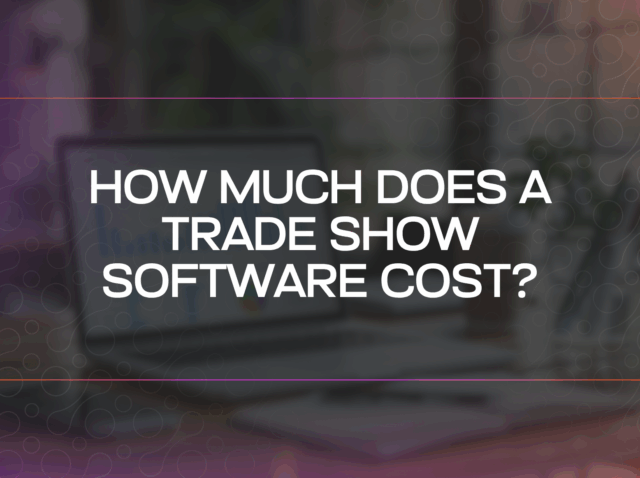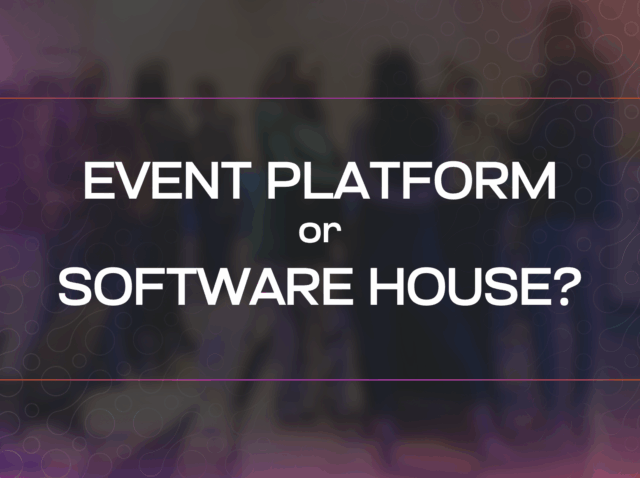You’re in the middle of organising a large-scale event.
You’ve carefully selected your exhibitors, secured sponsors (some with generous contributions) to boost lead generation, and gathered hundreds of attendees who even purchased premium tickets for extra benefits. Your programme includes renowned speakers and high-level Master Classes.
Everything seems perfectly planned… and yet, your participants aren’t using the event app the very tool you invested a part of your budget in, and the one that should be the beating heart of your digital strategy.
Some download it but never use it. Others don’t even bother to install it. The few who actually do find themselves in a digital desert an empty ecosystem with no interaction and some even claim they didn’t know the app existed in the first place.
This is a common issue for many event organisers. While the reasons can vary, data shows that there are a few recurring problems that explain why attendees ignore the event app you worked so hard to provide.
In this article, we explore the most common reasons why participants overlook or even disregard your event app, and how, if used strategically, it can become the winning card that simplifies management and improves results with less effort.
1. The event app is seen as an accessory, not a core tool
The reason
Often, it’s the organisers themselves who treat the event app as an optional extra a digital add-on to traditional tools like printed brochures, flyers, or venue maps. Sometimes they choose a basic or “representative” app but fail to invest adequately in its customisation, leaving it generic, poorly aligned with the audience, and lacking features that could truly add value.
This is a risky mindset. When results fall short, organisers may conclude that event apps simply don’t work and might avoid using them altogether in future events.
The solution
An event app shouldn’t be considered optional. It’s a central part of modern event management. Organisers should collaborate closely with their tech partners to discuss event goals, target segmentation, and expectations. Together, they can identify how to centralise and simplify key operations: registration, agenda management, networking, interaction, maps, bookings, and more.
This often requires a mindset shift, especially for event managers who haven’t previously integrated a digital solution into their strategy.
That’s why LetzFair acts as a partner, not just a provider: by listening carefully to the organiser’s needs, identifying the main challenges to solve through the event app, and helping unlock its full potential to achieve better results with less effort while offering real-time support throughout the event.
2. Poor or confusing user experience (UX)
The reason
A poorly designed event app or event web app or event platform that ignores user needs and lacks a well-thought-out user experience will never be embraced enthusiastically. A cluttered interface, slow navigation, confusing menus, or an unappealing design with hard-to-read colours will quickly drive users away.
The solution
For an event app to be effective, it must be intuitive and smooth to use. The user interface should be clean and logical, with clear menus and minimal steps to complete any action. Each feature should be easy to find and perform seamlessly.
The most successful event apps are those that use recognisable icons, simple layouts, and consistent logic. As Steve Jobs once said, less is more: your app doesn’t need every possible feature – it just needs to deliver exactly what participants want, no more and no less.
3. Features not aligned with participants’ needs
The reason
Using a one-size-fits-all event app may save money initially, but it rarely works in practice. Participants quickly realise that the available features don’t meet their needs, or that crucial tools are missing.
The solution
To ensure engagement, your event app must respond to your audience’s specific goals. For instance, a matchmaking or networking feature is essential for B2B events, while session reminders, meeting scheduling, or push notifications can make a big difference in conferences.
Understanding user behaviour and collecting feedback before, during, and after the event allows you to personalise the experience effectively.
LetzFair’s platform, for example, leverages generative artificial intelligence to personalise the navigation experience dynamically adapting to each user’s declared preferences and in-app behaviour, ensuring the interface evolves in line with their goals.
When possible, analyse data from previous editions: if some features had low engagement, consider replacing them. Listening to participants’ suggestions is often the best way to enhance the experience.
4. Technical issues or poor compatibility
The reason
It sounds obvious, but it’s not: technical issues are one of the most common reasons why participants abandon an event app. Frequent crashes, long loading times, or features that don’t work properly can frustrate users and lead them to uninstall it immediately.
Another surprisingly common issue is incompatibility with certain devices or operating systems.
The solution
Your event app should be tested extensively before the event to ensure full reliability. At LetzFair, for instance, we conduct multiple rounds of testing with both our internal team and the organiser to ensure flawless functionality, smooth integrations with third-party software, and an optimised UX on both technical and visual levels.
A professional event app must be compatible with all major mobile systems (iOS and Android) and ideally offer offline mode so participants can access key information even without an internet connection. The app should also be lightweight, fast, and responsive ensuring seamless navigation even in areas with weak connectivity.
Finally, a dedicated real-time support team makes a world of difference. Having a direct line to your provider allows you to troubleshoot issues instantly and guarantee a smooth experience for everyone.
5. Lack of incentives
The reason
Not all participants are the same, and neither are their motivations. Depending on their goals or expectations, some attendees won’t see enough immediate value in the event app unless they’re actively encouraged to use it.
The solution
Know your audience and tailor incentives accordingly. If your target group enjoys gamification, use it: display visible badges, point systems, and leaderboards to spark friendly competition. Offer rewards such as discounts on future events, branded gadgets, or exclusive content like private sessions or e-books.
You can also involve sponsors, offering them increased visibility within gamified challenges or rewards campaigns.
These techniques not only encourage app adoption but also increase engagement and satisfaction during the event leaving participants with a positive memory and a stronger connection to your brand.
6. Lack of integration with other platforms
The reason
Few things frustrate participants more than being redirected to multiple tools after installing your event app. Disconnected systems make the user journey fragmented: registration on one platform, meeting scheduling on another, and session details elsewhere. This creates friction and discourages engagement.
For organisers, collecting and synchronising data from multiple tools is time-consuming, error-prone, and inefficient.
The solution
Choose an integrated event app platform that centralises all key functions in one ecosystem. When your app is connected to your CRM, registration system, and real-time agenda, participants can manage everything from a single interface.
For example, they can register, book meetings, check the programme, and receive personalised notifications all in one place. Centralising data also helps organisers analyse results and optimise future editions without juggling multiple systems.
7. No post-event follow-up
The reason
After an event ends, many participants delete the app from their devices, assuming it’s no longer useful. When they stop receiving notifications or messages, that belief is reinforced.
The solution
Your event app can be a powerful post-event communication tool. Don’t let it go silent.
Send follow-up emails before the event concludes, inviting attendees to complete feedback surveys or access exclusive post-event content. Share session summaries, videos, or downloadable materials to keep the connection alive.
Continue publishing updates, promoting networking, and using gamification elements to transform your event into an active community one that remains engaged long after the event is over.
This not only strengthens loyalty and retention but also helps you collect valuable data to improve future editions.
Conclusion
Choosing an event app that truly engages participants isn’t easy. But understanding why users ignore it is the first step towards turning it into your most powerful ally.
Investing in a well-designed, user-friendly, integrated, and incentive-driven app can make a huge difference in your event’s success. Real-time support and continuous feedback collection further ensure that communication with your audience doesn’t end with the event it evolves into an ongoing relationship.
You don’t need to reinvent your entire digital experience: just choose a platform that puts participants at the centre, integrates seamlessly with other systems, and provides actionable insights for future optimisation.
With the right strategy, your event app won’t be a forgotten digital accessory it will be the driving force behind your next successful event.







